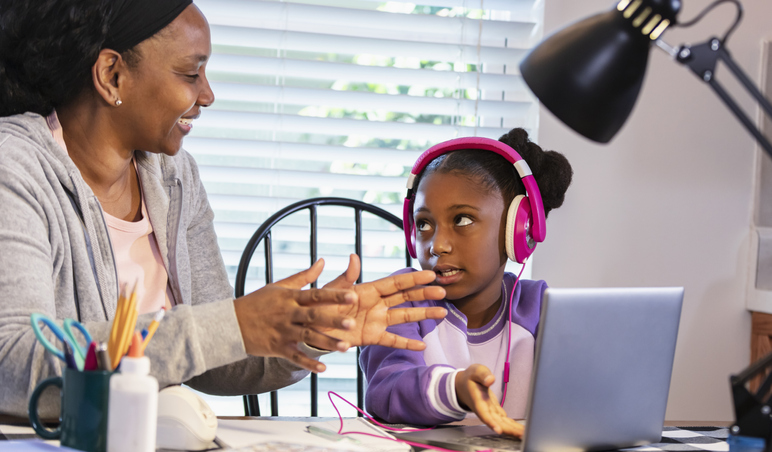
Source: kali9 / Getty
Black children are being misassigned to special education classes. The reasons, outcomes, and educators are on the hook for dropping the ball.
If you caught Mo’Nique’s new standup special on Netflix, you heard her story of being a special education (SE) student. The comedian explained that she was put in SE over a perceived language impairment, one of the 13 conditions for which children are in such classes. But it’s later revealed that Mo’Nique mispronounced certain words because her mother was illiterate – an issue the school didn’t consider.
The Parkers star found a way to make her troublesome past hilarious, but the underlining discrimination within the story is anything but funny.
Extensive research shows that Black children are put in special education classes more than white children for different reasons. While white children are typically enrolled in classes for medical reasons such as ADHD or dyslexia, Black children are more likely to be sent for emotional issues. However, as would have been the case with Mo’Nique, if teachers had taken the time to properly assess children with their families or further explore what’s happening in the home environment, they would discover that SE is not always the answer.

Source: Visoot Uthairam / Getty
Special education is an invaluable tool that can provide tailored support to children who need it. However, it is crucial to recognize the undeniable realities for children in these programs. Black children diagnosed with a condition that warrants special education classes are 1.5 times more likely to drop out of school than white children with the same conditions.
Special education students and Black children are most likely to be bullied. In 2015, Nyesha Terry, the mother of a special needs child in Chicago, witnessed her son being mistreated — and not by other students, but by his teacher.
Terry found that her child’s teacher had put a trash bag on him in place of a bib to manage some of his drooling — an occasional side effect of his epilepsy — even though there were plenty of extra clothes in the class she could have used. It is beyond disturbing but, sadly, far from an isolated incident.
The axe isn’t falling hard on those who bully the developmentally disabled either, as seen by the fact that NHL player Mitchell Miller, who was convicted of racially bullying and abusing a child in 2016, signed a contract to return to the rink in 2022.
While the wish is that educational institutions work to eliminate bullying and drop-out rates, for now, these are real risks for children in SE classes. To expose a child to these risks unnecessarily is irresponsible.

Source: SDI Productions / Getty
The research showing Black children being disproportionately assigned to special education also revealed disgusting bias levels by the teachers and researchers. It found that teachers expect lower academic performance in children of color, viewing their behavioral issues as a “choice.”
One of the most maddening reports explains that seeing more Black children with learning disabilities is “appropriate” given that they are more likely to live in poverty near toxins and have limited access to nutritious food. So the educational institution’s answer to this is: to put students who are acting out in class, due to possible toxin exposure and nutrition deficiencies, in special education, at which point their chances of dropping out of school and being bullied increase. Let that sink in for a moment.
Mildred Boveda, Associate Professor of Special Education at Penn State, focuses on the relationship between race and disability. The educator shared a story from her time working in Miami in 2010, in which she’d wanted to assign a student to special education classes, and the mother pushed back. The girl’s mother explained that she had been put in the class and received a “low-quality education.” So, the mom and Boveda changed direction, creating an individual education plan (IEP) for the pupil. Rather than making the impulsive choice to banish a child to special education classes for behavioral issues, teachers should be willing to explore the possible root causes of said issues, meet with the parents and take a holistic approach to reforming the child’s behavior.
Special education can be a gift for the right child, but for some children who do not require it, the cure is worse than the disease. In 2005, the Texas Board of Education passed a policy showing precisely what would happen if schools were more discerning about how many minority children were put in special education. The procedure essentially called for a cap on the percentage of the overall student population that could be placed in the classes. As a result, many Black students were removed, and subsequently, their likelihood of completing high school and applying to college increased.
The misassignment of Black children to special education classes has adverse effects on many students and needs to be addressed.


0 Commentaires